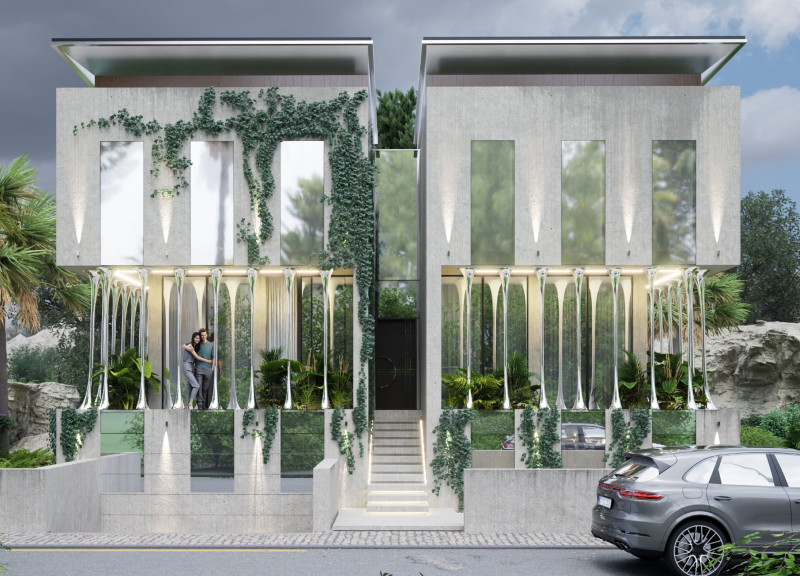5 key facts about this project
At first glance, the design is a seamless blend of practicality and aesthetic appeal, with an architectural style that pays homage to its surroundings while forging its own identity. The project encompasses several key functions, serving as a multipurpose space that caters to various community needs. Whether it is utilized as a cultural hub, a workspace, or a gathering area, the architecture is crafted to foster interaction and connectivity among its users.
One of the defining characteristics of this project is its dynamic interplay of materials. The use of reinforced concrete establishes a solid foundation, providing durability and strength, while expansive glass facades invite natural light, creating an open and inviting atmosphere. This choice enhances not only the visual connection to the external environment but also promotes energy efficiency through passive solar design strategies. The incorporation of steel elements adds a modern touch, facilitating longer spans and unique structural configurations that elevate the overall aesthetic of the structure.
Moreover, natural materials like wood are thoughtfully integrated to add warmth and texture to the interiors. This blend of materials emphasizes the project’s commitment to sustainability, as local resources are prioritized to minimize environmental impact. The design employs a meticulous detailing approach, with careful consideration given to how each element interacts with another. Architectural details such as custom joinery and hand-crafted finishes exemplify a high level of craftsmanship, enhancing the user experience and elevating the overall design quality.
The architectural layout is characterized by fluid spaces that encourage versatile usage. Open floor plans allow for flexible arrangements, accommodating various functions and adapting to the changing needs of the community. Key areas are strategically positioned to enhance flow and connectivity while maintaining privacy where necessary. Terraces and green roofs have also been integrated, providing outdoor spaces that connect users to nature, fostering a sense of well-being and tranquility.
Unique design approaches are evident throughout the project, with an emphasis on biophilic design principles that enhance the relationship between nature and architecture. Features such as living walls and integrated landscaping blur the boundaries between indoors and outdoors, promoting biodiversity and creating a restorative environment. These elements not only serve functional purposes but also contribute to the overall emotional and psychological benefits for the users of the space.
In addition to its architectural significance, the project stands as a cultural landmark within the community, reflecting local heritage while embracing modernity. Artistic elements have been incorporated into the façade treatment, engaging passersby and inviting them to explore the site. This cultural depiction strengthens the identity of the area and acknowledges its historical context, creating resonance with the community's narrative.
The architectural designs are grounded in research and thorough analysis, informed by the needs and desires of the community it serves. Architectural plans and sections reveal the careful consideration of light, space, and context, all of which enhance the functionality of the project. Each design decision reflects a conscious effort to create spaces that are not only beautiful but also practical.
As you explore the project presentation, take note of the architectural ideas that underline its success. Review the architectural sections to understand how each layer of design functionally and aesthetically contributes to the whole. This project exemplifies a harmonious blend of innovative architecture rooted in community values, paving the way for future developments that prioritize connection, sustainability, and thoughtful design.


 Gļebs ščeglovs,
Gļebs ščeglovs, 




















